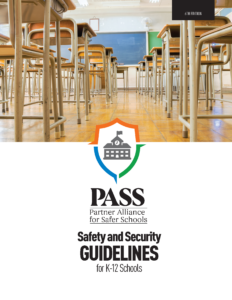Caution Needed on Fever Screening Technologies
As educators across the world adapt their curricula to enable learning opportunities for students quarantined at home, those responsible for safety and security are planning for the eventual return of students to their schools.
That planning now includes the challenge of protecting students, faculty and staff against the spread of infectious diseases – in particular, COVID-19. As a result, many have been looking to technology for answers. Thermal imaging solutions are being considered as a possible means for screening people entering schools for fever, which is a measurable symptom of COVID-19; however, safety practitioners should proceed with caution before deploying these solutions and use the following information to help guide their decision process.
The U.S. Food and Drug Administration (FDA) regulates the use of “telethermographic systems” as adjunct medical devices but has recently suspended enforcement of these regulations due to the public health emergency declared by the U.S. Department of Health and Human Services (HHS) concerning COVID-19. As a result, many manufacturers of thermal cameras see an opportunity to market solutions to schools as a screening method for high-throughput areas such as school entrances. The Partner Alliance for Safer Schools encourages all schools that are considering the use of this technology to read the announcement and follow the FDA’s current recommendations specifying essential implementation practices. These recommendations include but are not limited to the following:
- The accuracy range of thermal cameras used for screening should be less than or equal to ± 0.9° F over the temperatures spanning 93.2 -102.2°F.
- The system must include an accurate blackbody temperature reference source, which is a device that provides a known temperature reference source in the field of view for the thermal camera to use for calibration.
- Operational deployment should specify one-to-one screening of individuals for elevated temperature, which limits the efficiency of screening people in high-throughput areas.
- Elevated body temperatures need to be confirmed using an FDA-approved thermometer.
Keep in mind that any deployment of such technology must necessarily be accompanied by policies and procedures covering next steps after possible fever is detected, and remember that many cases of COVID-19 are asymptomatic.
The FDA statement is not a policy change but rather a suspension of enforcement related to the use of telethermographic systems during the COVID-19 pandemic. Once the state of emergency related to COVID-19 is lifted, the FDA approval process and enforcement policy for telethermographic systems will revert to its normal criteria, making these purchases subject to requirements and scrutiny of the full “510(k)” approval. While manufacturers are seeking approval for use of products that can scan multiple individuals at once, at the time of this writing, no device has been approved for that purpose.
Download the PDF version of this article.

Ready to get the Guidelines?
The most comprehensive information available on best practices specifically for securing school facilities, vetted extensively by experts across the education, public safety and industry sectors.
